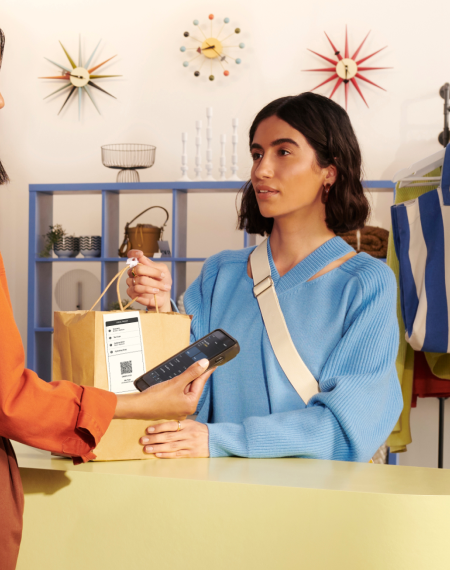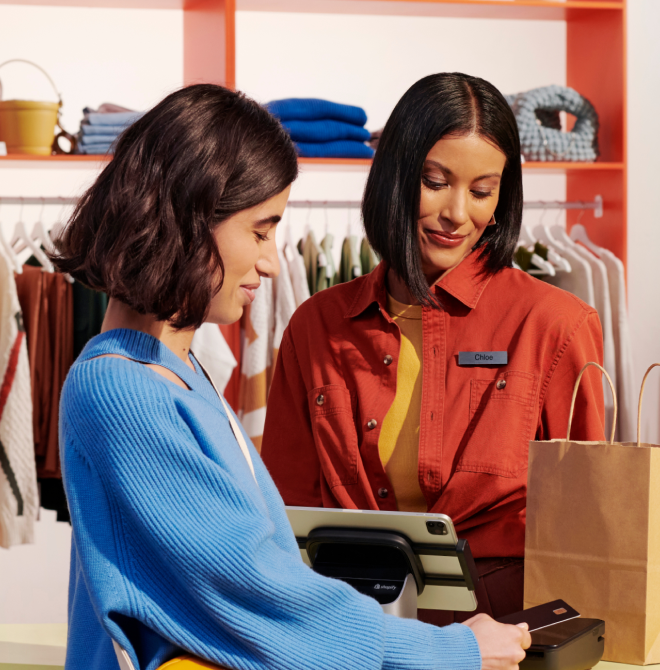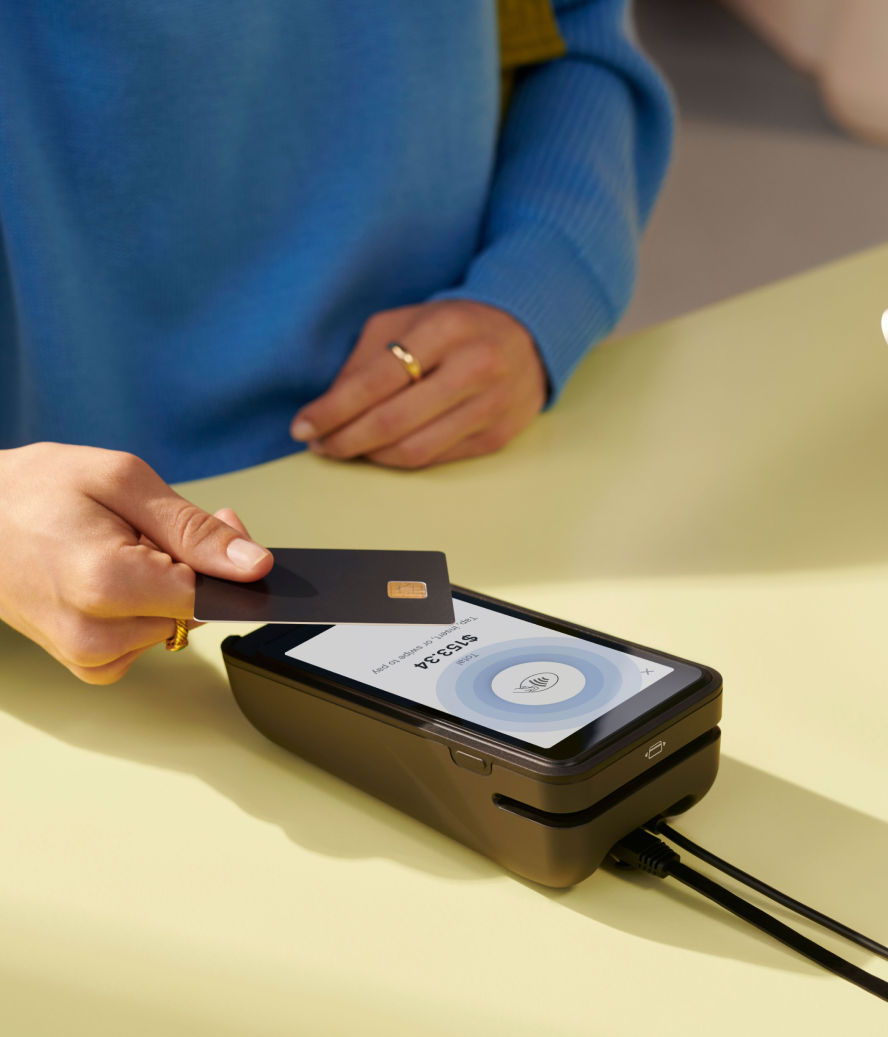With the help of automated retail technology, consumers can walk into a store, grab what they need, and check out in seconds—no lines, no waiting. In the digital retail world, they get personalized product recommendations, virtual try-on options, dynamic digital signage, and fast delivery.
Retailers benefit directly, too. Besides keeping up with customer expectations, automated technology can keep shelves stocked with precision, reduce costs, and improve operational efficiency.
This win-win scenario is why the retail automation market is poised to skyrocket from $20.02 billion today to $39.67 billion by 2030—and why retailers that may be lagging must put adopting these technologies on their “business growth goals checklist”.
In this article, we’ll cover the benefits and examples of the top automated retail technologies you can implement in your store.
What is an automated retail technology system?
Automated retail technology systems use tools like artificial intelligence (AI), the Internet of Things (IoT), and machine learning (ML) to improve retail operations and customer satisfaction. These systems power everything from self-checkout kiosks to smart shelves that track inventory in real time.
Unified commerce takes this a step further, integrating online and offline retail. Platforms like Shopify POS help retailers sync their inventory, sales, and customer data across every channel.
For example, a customer can check a product’s availability online, reserve it, and pick it up in-store—all while earning loyalty rewards. This level of cohesion allows retailers to provide a consistent and convenient shopping experience, no matter where or how customers shop.
Benefits of automated retail technology
Here are some of the main benefits retailers experience when adopting automated retail technology:
- Improved efficiency. Currently, 51% of shoppers abandon purchases due to long checkout lines. Retail technology, such as automated inventory management systems, speed up checkout times (or eliminate them completely).
- Enhanced customer experience. The same report found67% of customers leave stores empty-handed because they can’t find the products they need. Automated systems direct customers to products, provide personalized recommendations, and offer seamless cross-channel shopping experiences.
- Cost savings. Reduce labor costs with self-checkout systems and robotic stock management. This improves operations through AI-driven supply chain optimization, and lowers operational expenses by minimizing errors and waste in inventory management.
- Increased inventory accuracy. AI-powered inventory tools provide data to help keep shelves (real and digital) stocked while preventing overstocking.
- Scalability. These tools help retailers rapidly scale operations by improving their logistics, supply chain management, and fulfillment capabilities.
- Data-driven insights. Advanced analytics give actionable data on the customer experience and their preferences and behaviors so that businesses can make informed decisions.
Examples of automated retail technology
We’ve talked about the benefits of automated retail technology, but what solutions should retailers adopt? What tools are out there, and how can they improve your business? Let’s explore some of the top automated retail technologies.
Unified commerce platforms
Unified commerce platforms are a cornerstone of automated retail technology. Leading tools, like Shopify, bring data, inventory, ordering, and analytics together so you can easily manage operations across all your channels from one centralized tool.
More specifically, Shopify offers the following features:
- Centralized inventory management. Shopify automatically syncs stock levels across all sales channels, including your online store, physical stores, and marketplaces like Amazon or eBay. This real-time synchronization ensures accurate inventory visibility and helps avoid overselling or stockouts.
- Automated order routing. Orders from any channel—whether a website, mobile app, social media storefront, or in-store—are routed to a central system. This system updates inventory in real-time, assigns orders to the nearest fulfillment location, automatically generates shipping labels, and sends confirmation emails to customers.
- Smart reordering system. Shopify monitors stock levels and takes proactive action when inventory is low. It automatically generates purchase orders when preset thresholds are met, notifies suppliers, and updates inventory records when new stock arrives. This eliminates manual intervention and reduces the risk of running out of key products.
- Cross-channel customer data synchronization. Shopify keeps customer information, purchase history, and loyalty points consistent across all touchpoints. Whether customers shop online or in-store, retailers can deliver personalized experiences and maintain accurate unified customer profiles.
Adopting solutions like Shopify POS also delivers measurable results. An independent consulting firm found that retailers on Shopify experience 20% faster implementation times, a 22% lower total cost of ownership compared to competitors, and a 50% growth in omnichannel gross merchandise value (GMV) quarterly year-over-year.
Microservices infrastructure
Microservices infrastructure breaks down commerce operations into independent, modular services. Unlike monolithic systems, microservices allow retailers to customize and scale specific parts of their operations without overhauling the entire platform.
Key features of microservices architecture include:
- Independent services: operates each function, such as inventory management, order processing, or customer data, as a standalone service with its own data store.
- API communication: ensures services interact through standardized APIs for seamless integration between components.
- Dynamic scaling capabilities: scales individual services, like order processing during peak shopping seasons, without impacting other system components.
- Service-specific updates: updates or replaces individual services independently, minimizing downtime and allowing the system to evolve with business needs.
Clienteling software
Clienteling software integrates with unified commerce platforms and customer profiles to equip store associates with detailed customer data. This includes past purchases, preferences, and loyalty information.
Pet food retailer Tomlinson’s, for example, uses clienteling tools integrated with Shopify customer profiles to offer customized recommendations, suggest complementary products, and provide an exclusive shopping experience based on individual preferences and history. Cashiers can see each customer's loyalty program status and apply appropriate rewards at checkout.
Key features of clienteling software include:
- Unified customer profiles, which aggregates data from online and in-store interactions, including purchase history, wish lists, and loyalty points.
- Personalized recommendations, which use retail AI to suggest products based on customer preferences and behavior.
- Appointment scheduling to let customers book personalized shopping sessions with associates who already know their preferences.
- Integration with loyalty programs, which connects loyalty data with in-store interactions to reward and retain high-value customers.
Self-checkout kiosks
Self-checkout kiosks allow customers to scan, bag, and pay for their purchases independently, reducing reliance on cashiers. These kiosks are a common sight in grocery stores, convenience stores, and retail outlets. For example, Walmart’s self-checkout stations give customers the flexibility to complete transactions quickly while reducing wait times during peak hours.
Key features of self-checkout kiosks include:
- Integrated payment systems to accept a variety of payment methods, including credit/debit cards, mobile payments, and cash.
- Real-time inventory updates that reflect scanned items instantly in the store's inventory system.
- Customizable interface to display branding, promotions, and personalized recommendations tailored to the retailer.
- Loss prevention technology which detects discrepancies with built-in weight sensors and cameras, reducing theft and errors.
Electronic shelf labels (ESL)
Electronic shelf labels (ESLs) are digital displays that replace traditional paper price tags on retail shelves. They allow retailers to instantly update pricing and product information across all stores from a centralized system, reducing labor costs and pricing errors.
For example, Kroger uses ESLs to adjust pricing dynamically, promote discounts, and provide product details in real time across its stores.
Key features of ESLs include:
- Instant price updates to adjust prices across thousands of items simultaneously.
- Dynamic promotions to schedule and display time-sensitive discounts and flash sales to boost purchases.
- Energy-efficient displays using e-ink technology that consumes power only during updates.
- Customizable content to display additional product details, QR codes, or customer reviews alongside pricing.
RFID inventory tracking
RFID (radio-frequency identification) inventory tracking uses small, scannable tags embedded with radio-frequency chips to track products throughout the supply chain and in-store. Unlike traditional barcodes, you can scan RFID tags without direct line-of-sight and provide real-time updates on inventory levels.
Fashion retailer Rebecca Minkoff uses RFID tags to track every item from warehouse to store. When products arrive at a store, employees scan the shipment, and inventory levels are automatically updated in Rebecca Minkoff’s system. This technology allows the retailer to quickly restock popular items right away.
Key features of RFID inventory tracking include:
- Real-time inventory updates to track inventory levels automatically across all locations with 99% accuracy compared to manual methods.
- Stock audits to read multiple tags simultaneously with RFID scanners, completing inventory checks much faster than barcode systems.
- Integrations to synchronize data instantly with warehouse and store inventory systems.
- Theft prevention by pairing RFID tags with security gates to reduce loss from theft.
Automated warehouse picking systems
Automated warehouse picking systems use robotics, conveyor belts, and machine learning to streamline the process of selecting and moving items within warehouses. These systems increase accuracy, reduce human error, and speed up order fulfillment by automating repetitive and labor-intensive tasks.
In its fulfillment centers, Amazon uses automated picking systems with robotic units like the Kiva robots. These robots move shelves of products to stationary workers or other robots, significantly reducing the time required to locate and pick items.
Here are the main features:
- Robotic picking and transport to retrieve and move items to designated packing or shipping areas using robots.
- Real-time order prioritization which analyzes incoming orders and adjusts picking priorities to meet shipping deadlines.
- Integration with inventory management systems to track stock levels accurately.
- Error reduction tools, which validates picked items against order details using vision systems and sensors, minimizing errors in shipments.
Computer vision systems
Computer vision systems use AI-powered image recognition to interpret and analyze visual data from cameras and sensors. Retailers use these systems for checkout automation, inventory tracking, theft prevention, and customer behavior analysis.
Amazon Go stores use computer vision technology as part of their "Just Walk Out" system. Cameras and sensors track which items customers pick up and place in their bags, automatically charging them when they leave the store without requiring a traditional checkout process.
Key computer vision system features include:
- Checkout automation to track products as customers add them to their carts and automatically processes payments upon exit—no cashiers needed.
- Inventory monitoring to identify low-stock shelves or misplaced items and gives real-time updates to store staff for replenishment.
- Customer behavior analytics to analyze shopper movement patterns, dwell times, and product interactions to optimize store layouts and product placements.
- Contactless experiences which facilitate touch-free operations, such as scanning loyalty apps or accessing personalized recommendations via in-store kiosks.
Customer service chatbots
Customer service chatbots are AI-driven tools that interact with customers through text or voice to answer questions, resolve issues, and provide support 24/7. They’re designed to handle routine inquiries, recommend products, and even assist with order tracking, freeing up human staff for more complex tasks.
Key features of customer service chatbots:
- 24/7 availability to handle customer inquiries anytime.
- Order tracking to provide real-time information about order status, shipping, and delivery directly to customers.
- Personalized product recommendations that use customer preferences and purchase history to suggest relevant products.
- Multi-platform support that integrates with websites, messaging apps (like WhatsApp and Facebook Messenger), and voice assistants (like Alexa or Google Assistant).
💡Pro tip: Shopify Inbox lets you guide customers through product selection, check stock availability, and provide outfit recommendations. The chatbot also references your unified Shopify data to help customers find nearby stores and manage online orders.
Automate your retail operations with Shopify
The retail industry is sprinting toward change. In fact, the World Economic Forum reports that the retail sector is currently 40% automated but is expected to reach 60–65% automation within the next three or four years.
To stay ahead of the curve and keep your retail business thriving, now is the perfect time for digital transformation. And the best place to start? Integrate unified commerce tools into your tech stack.
Shopify is the leading platform to help you streamline your operations, improve customer satisfaction, and drive success across all channels.
Automated retail technology FAQs
What is an automated retail system?
Retail automation solutions use technologies like AI, IoT, and robotics to handle things like checkout, inventory tracking, and personalized customer interactions.
What is smart retail technology?
Smart retail technology integrates tools like AI, machine learning, IoT, digital signage, footfall, and more to improve operations, provide personalized shopping experiences, and connect online and in-store retail processes.
Which technology is widely used in retail sales counters?
Retailers widely use self-checkout systems, RFID scanners, and advanced point-of-sale (POS) solutions to speed up transactions, manage inventory, and process multiple payment methods efficiently.
What is smart merchandising?
Smart merchandising in digital retail uses AI, real-time data, and digital displays to optimize product placement, track consumer preferences, and dynamically adjust pricing and promotions.





